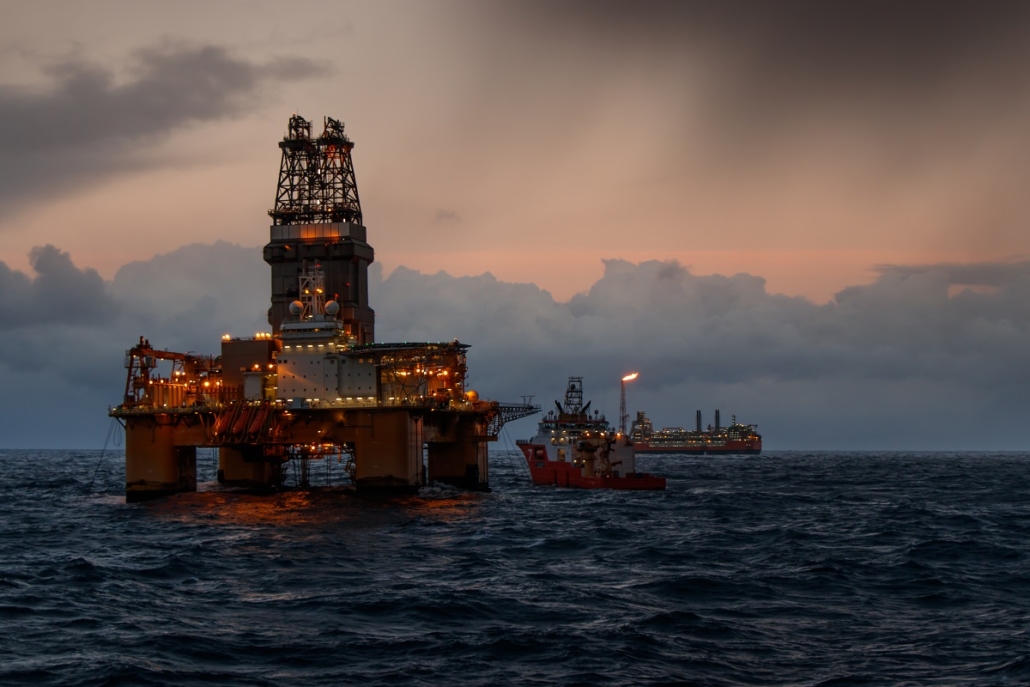Power Management Options for Offshore Oil & Gas Rigs
Offshore oil and gas production is a growing sector. Offshore deposits are typically much larger than those that are found on land. This is why more companies are looking to develop them. As oil prices slowly increase, offshore oil and gas production increases as well. No one knows exactly when gas will shoot up, but it could be soon. And when it does, offshore oil production will likely increase drastically as well.
One of the strongest challenges offshore production faces is finding a suitable, sustainable and cost-effective power source. Offshore oil and gas wells have shown to have a large amount of supply, but providing enough energy to power the rig to get that supply presents a unique challenge due to the offshore location of the rig. If you are looking to power an offshore rig, here is some information you need to know.

What Needs Power on an Offshore Rig
An uninterrupted power supply is essential for the oil and gas industry and lots of equipment on a rig needs powering. A lot of specialized, heavy equipment is used to drill the oil. This includes equipment such as a crane and hoisting system, large engines, a turntable and pumps. Once the oil is being produced, power is needed to extract and produce the oil. This includes the use of an electric motor that powers a rod that sucks the oil up the well or a machine that produces steam to force oil up and out.
Lastly, the rig also must provide employees with their energy needs while they are housed on the rig. Large generators need power to desalinate water, power washing machines, provide a heating source for cooking and even process waste. Rigs are like mini cities unto themselves.
Diesel-Powered Generators – The Most Common Power Source
Now that you know what needs power on an offshore oil rig, you can learn more about how power is supplied to the rig. The most common way to supply enough power to the rig is through the use of diesel-powered generators. However, diesel generators stationed offshore require additional features and configurations. Conditions offshore are harsh and variable. As such, the generators that are produced to be used on oil rigs must be built with materials and coatings that can withstand the temperature-extremes, water, saline and wind that are present offshore. They are also designed so that they do not need frequent maintenance and overhauling, as it can be hard for a maintenance member to go offshore and provide these services.
Diesel isn’t the only type of generator that can be used. Gas generators can also be used to power offshore rigs, but they are less common than diesel-powered generators. They simply are more expensive to run and require a bit more maintenance than diesel.
Quest to Make Offshore Power Usage More Efficient
Powering an offshore rig is not cheap. A diesel generator powering an entire rig can use upwards of 20–30 m3 diesel fuel per day according to the leading oil and gas association IPIECA. As such, it is important to look for ways to reduce power usage on the rig and ensure that it is efficient. Ensuring that power usage is efficient helps to reduce the use of power, thereby reducing the amount of fuel that is needed to power the generator. Currently, there are two ways to do this.
The first way to make offshore power usage more efficient is to properly and efficiently plan drilling operations. A few of the ways that you can properly plan your drilling operations include looking at mooring versus dynamically positioning the platforms, evaluating electric versus hydraulic heave compensation systems and the integration of tools, such as a remote-controlled rotating and hoisting cement head, to reduce equipment rig-up time and energy consumption.
The second way to make offshore power usage more efficient is to enhance the power management system of diesel generators by running generators at the right load. If a generator is run at a higher load than it should be, it may be producing more power than you need, which means you are wasting gas. If the unit is run at a lower load than you need then it heightens the risk of wet stacking where engine temperatures fail to reach a level high enough to burn enough of the fuel, leaving unburnt fuel to collect around the exhaust system. Wet stacking can drastically reduce the performance and life expectancy of a generator.
Alternative Methods to Powering Offshore Operations
While diesel-powered generators, followed by gas generators, are the most common ways to power offshore operations, they are not the only methods available. Technology is ever-changing and as technology advances, new methods are being developed to more efficiently power offshore rigs.
One of these methods is subsea cables. Subsea cables connect an offshore oil and gas rigs to onshore power sources. This eliminates platform CO2 emissions, increases space on the rig where a generator would normally reside, reduces the weight of the platform and makes the work environment safer and healthier. Subsea cables are also easier to maintain when compared to generators. Norway, with its significant North Sea oil reserves, is a pioneer in offshore power solutions and has been utilizing subsea cables in the Utsira High region, up to 200km (around 125 miles) from shore.
Another method used to power offshore oil rigs is to use wind farms. Again Norway is leading the way – discussions are underway to build 11 floating offshore wind turbines in the Gullfaks and Snorre oil fields. It is thought the turbines can supply the 5 platforms with up to 35% of their power needs, cutting CO2 emissions by 200,000 tonnes per year. Just like with subsea cables, removing power generation from the oil rigs increases space on the rig, reduces the weight of the platform and makes for a healthier and safer work environment. Using floating platforms also opens up the possibilities for more platforms and more wind farms to be placed to increase the amount of power that is produced as needed.
Another method that is being developed to power offshore rigs is PowerBuoys. This product is being developed by a company called Ocean Power Technologies. Wave power is produced through the use of buoys and, while this can’t generate enough to power heavy operations, it can help to supply power for minor operations such as monitoring equipment. More monitoring is also being done remotely, lessening the power burden on rigs. The buoys can also store energy, which makes this a unique option for a backup power system as well.











